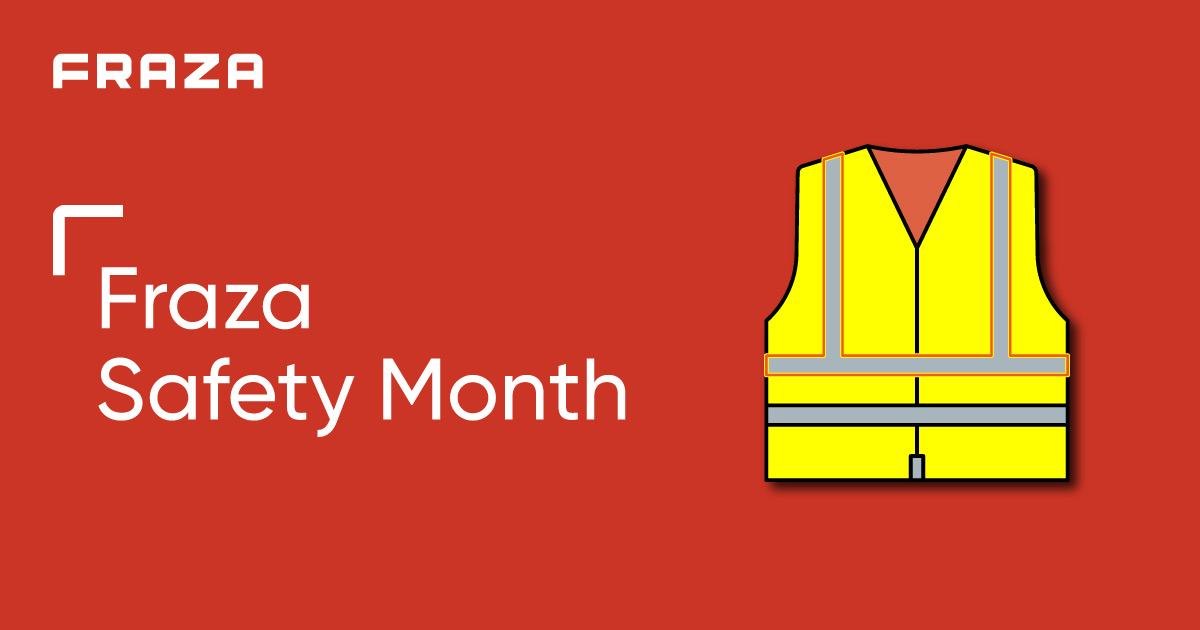
The Latest
Five Key Elements of Forklift Safety

National Forklift Safety Day is June 11th, but here at Fraza we believe safety is so important that we decided to dedicate a whole month to it. Fraza’s Safety Month aims to educate on the safe use of forklifts and how to make safety a priority at your company. Read on to learn the five elements of forklift safety in order to keep your employees and your workplace safe.
1. Importance of operator training
The first step to forklift safety is making sure employees are properly trained on how to effectively operate a forklift. An untrained forklift operator can be just as dangerous as an unlicensed motor vehicle driver. Workers without proper training and operators who drive carelessly have a higher risk of injury or death. Safety doesn’t stop once you obtain your certification. When operators get overconfident, they don’t take all the measures to be safe and are more likely to make mistakes. Getting recertified every three years will keep your skills up to date and allow you to be continuously learning in order to be mindful of the differences between models of forklifts and the materials you are moving.
2. Wear your seatbelt
Operators should not start the forklift until they are safely seated in the truck and have fastened their seatbelt. Drivers need to be aware that using the seatbelt while operating a forklift is just as important as using the seatbelt while operating a car. Tip-overs are the number one fatality to forklift operators because of the number of drivers who fail to fasten their seatbelts. If a tip-over would occur, the operator’s first reaction would be to jump out. The seatbelt on a forklift is designed to keep you secured in the seat to protect your head and torso from getting trapped between the truck and the ground. Although it seems like a small safety device, fastening your seatbelt greatly increases your chance of survival.
3. Tip-over prevention
While wearing a seatbelt will help protect you in the event of a tip-over, there are also steps to take in order to prevent a tip-over from happening in the first place. Knowing your forklift’s capacity will prevent you from moving a load that your truck can’t handle. Before operating, make sure that the load is stable and secure; carrying an unbalanced load can cause the forklift to lose balance and tip over. Being cautious by driving slow in wet or slippery conditions and slowing down while taking turns can reduce your chances of a tip-over and increase your chances of getting the job done safely.
4. Safe refueling and recharging
Whether internal combustion or electric, making sure your forklift has the energy to get the job done is important. Both refueling and recharging your forklift have potential hazards and require steps to keep you safe. Separate designated areas need to be established for refueling and recharging. These areas need to be well ventilated, free of open flames or sparks, and have water and neutralizing agents available in case of spills. Personal protective equipment like goggles, face shields, gloves, aprons, and protective footwear should be worn while recharging your forklift or refueling with liquid petroleum gas. Always make sure the engine is turned off before refueling or recharging your forklift.
5. Pedestrian awareness
Forklift safety is important for all employees, whether you are an operator or a pedestrian. It is the operator’s responsibility to look out for fellow employees, but it is helpful for pedestrians to be knowledgeable on the operation and dangers of forklifts in order to know the precautions they should take. Your facility should be designed to optimize visibility and try to eliminate blind spots. Operators and pedestrians should treat intersections in the workplace as they would on the street by slowing down, looking both ways, and proceeding with caution. Increasing communication and awareness between operators and pedestrians helps to make safety everyone’s responsibility.
Fraza Safety Month is just getting started, keep checking back during the month of June for new safety topics every week.